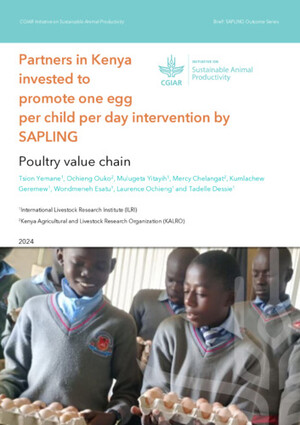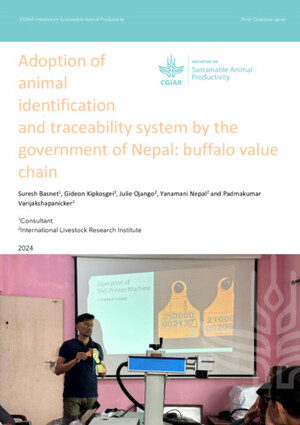
Value chain analysis for products and by-products of egg laying birds in peri-urban areas of Nairobi City
Abstract
Livestock keeping in urban areas is a source of livelihoods for poor urban families, but it also poses public health challenges.
Purpose
This included mapping of value chains for products from commercial layers (CL) and indigenous layers (IL) kept in peri-urban areas of Nairobi City, prioritization of barriers to entry into layer farming and assessment of disease and food safety management.
Methods
Data on interaction between people and poultry products, barriers to entry and disease and food safety management were collected through key informant interviews, focus group discussions (FGD) and administration of questionnaires. Twelve FGD were conducted and 250 questionnaires administered to individual farmers. Additional data was obtained from retailers of poultry products and government officers.
Results
The CL farms kept between 100 and 1,000 birds per flock while for IL farms, flock sizes were between 1 and 50 birds. CL farms obtained day old chicks from distributors of large and small-scale hatcheries and from hawkers, while IL farms obtained chicks from small-scale hatcheries and neighbouring farms. Products from these farms were eggs, spent hens and poultry manure. Eggs from CL farms were sold to shops, consumers and hawkers, while those from IL farms were sold to neighbours, bakeries and restaurants, while some were consumed at home. Spent layers were sold to brokers, neighbours and households. Poultry manure was used on crop farms and as feed for dairy cattle. The barriers to entry included poor quality feeds, poultry diseases, seasonality and scarcity of water and land. The diseases included coccidiosis, Newcastle disease and respiratory problems and these were managed by personnel from “agrovets”, while in slums sick birds were slaughtered and consumed. Furthermore, hawkers and personnel from restaurants and shops were reported to lack training in food safety.
Conclusion and relevance
Risk for zoonoses exists along poultry value chains and hence with increasing urbanization in developing countries, investigation of food systems in cities should adopt this framework to better understand public health risks.
Citation
Onono, J., Alarcon, P., Karani, M., Muinde, P., Akoko, J., Carron, M., Fèvre, E.M., Häsler, B. and Rushton, J. 2015. Value chain analysis for products and by-products of egg laying birds in peri-urban areas of Nairobi City. Presentation at the 14th conference of the International Society for Veterinary Epidemiology and Economics (ISVEE), Merida, Yucatan, Mexico, 3-7 November 2015.









